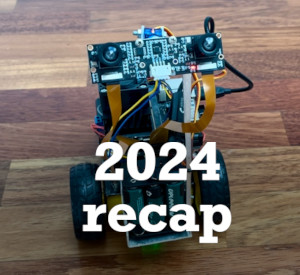Welcome to my site
My name is Ignacio (Nacho) Mellado. I build intelligent machines with visual perception and control. In this website you will find a selection of my projects, experiments and random thoughts.
HF1: End of 2024 Recap

As the year reaches its end, I wanted to share with everyone what the HF1 project accomplished in 2024 and what to expect in 2025.
Every sign of support is one more push for HF1 to become a real product. If you joined the waitlist, talked about HF1, liked or reposted my posts, thank you.
One of my New Year's resolutions is making HF1 a learning experience around a DIY kit. If you want that too, please spread the word. There’s a section at the end with ways in which you can help [...]
A lot has happened since I started working full-time on the project in mid April. The prototype’s hardware was mostly in place back then, from the time HF1 was just a fun way to pass the time on [...]
How to get into robotics if you are a CS major
I was recently asked by a Computer Science (CS) major about a good roadmap to get into robotics. This is was my response, in case it can help someone else:
My approach to learning is normally by making. If that’s the case for you too, the best way to learn to make your own robot is starting to make your own robot. That should be the forcing function [...]
Linear algebra: to express locations and movements of the robot and other things in 3D, e.g. vectors, homogeneous matrices, quaternions… There's a lot of overlap with 3D graphics here.
Synchronization: robots are almost always distributed systems; even when there’s only one processor, there are many independent sensors and actuators that can’t be queried/commanded [...]


